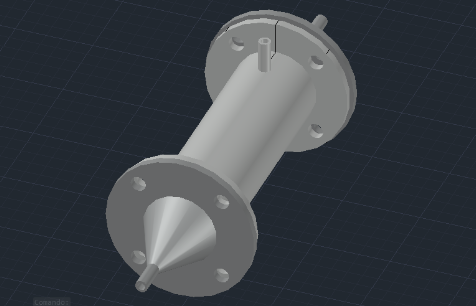iGEM Unesp Brazil
Hardware
Background
In the human body, the largest amount of microorganisms is found in the large intestine due to the favorable characteristics for their survival, such as the slow movement rate, pH and nutrients availability. The large intestine carries more than 101² microorganisms per body gram (Figure 1).

An important analysis to be carried out with genetically engineered probiotics is how they respond to the diversity of microorganisms present in the gut’s microbiome. For this analysis to be performed reliably and without the use of animals in initial stages of research, it was necessary to construct and model a bioreactor that resembles the human intestine and that has the ability to simulate, as closely as possible, the intestinal conditions. We designed our bioreactor to simulate the three parts of the large intestine, proximal, transverse and distal colon.
The widely used systems for bowel simulation are systems with a single reactor, continuous systems with one or more reactors, and artificial digestive systems (involving the stomach, small intestine, and large intestine). Batch fermentative systems are more difficult to control and are used for short-lived experiments, depending on the inoculum rate and rate of substrate consumption. Continuous systems are used for conducting long-term tests so that multi-stages are very interesting for the different parts of the intestine, which reaches the steady state becomes reproducible.
As a way of describing more efficiently the intestinal characteristics, a different reactor model was proposed, which will be divided into three parts: with piston flow as it occurs in the intestine, continuous mode of operation, sample withdrawal, control pH, temperature control system and also with proportional dimensions to real ones. To avoid washing the microorganisms, a porous support was used in the first part of the reactor.
3D Bioreactor Design and Assembly
AutoCAD 3D was used to draw the bioreactor for 3D printing (MakerBot Replicator +). The technique allows for greater versatility of forms and complete personalization of the new model. Designed and printed parts can then be assembled to create a fully functional bioreactor, minimizing problems related to the number of outlets, inputs, control and sampling points, connector sizes and leaks.
A photo of the first bioreactor designed, printed and assembled is shown in Figure 2. Its dimensions are presented in Table 1.


We faced a few problems printing our bioreactor model 1.0, once its size (20 cm) is bigger than the printing area of our 3D printer. Therefore, we had to make changes in our project.
Our 3D printer builds objects layer by layer with melted plastic. Thus, complex structures are printed with supports to assist sustentation. Unfortunately, these supports affect the bioreactor functionality, lessen resolution, and cause leakage.
For the second attempt, we tried to make it simple and easy to print. Bioreactor model 2.0 was designed without the sample outputs and shorter (16 cm) (Figure 3). For this one, it is possible to see the designed fittings for sealing the reactor.

As shown in Figure 4, we were able to print and assemble the model 2.0. However, once again it was leaky due to unforeseen supports.

After two failed attempts, bioreactor model 3.0 was designed and printed in several small pieces, which were glued and varnished afterwards. That way, we thought we could eliminate the supports and prevent leakage. However, the structure built by the 3D printer was loose and allowed water to permeate the mesh.

At that point, we decided to change completely our approach. We combined silicone hoses with 3D printed pieces to build the Bioreactor model 4.0 (Figure 6).
Finally and fortunately, our Bioreactor model 4.0 has no leakage and it is fully functional!


Final test
A 12h test was performed to evaluate bioreactor 4.0 impermeability and resistance to 37°C, which is the temperature of the human body. A mixed culture was grown in the bioreactor operated as a chemostat with continuous in- and outtake. The bioreactor was also stable throughout the time, supporting bacteria growth. We were even able to raise the temperature up to 60°C without causing any structural damage.
Our bioreactor model 4.0 costed about USD 40. Cost was estimated in Reais (Brazilian currency) and converted to US Dollars. The price of PLA and the silicone hoses may be different in other countries.


Click here to download the files and build your own bioreactor!
